Legend has it that short wheelbase 911s were often a bit short on praise when it came to discussing handling characteristics. They had a tail-happy behaviour apparently, and thus were considered to be suitable only for expert drivers. Perhaps this ‘steered’ potential Porsche buyers towards the slightly less challenging LWB version, built from 1969 onwards. But did the SWB deserve its reputation for reversing into hedgerows, that even the previous owner of my own car warned me about? Thumbing through road test reports from between 1965-68, the overall impressions were that the cars were in fact very neutral in their handling.
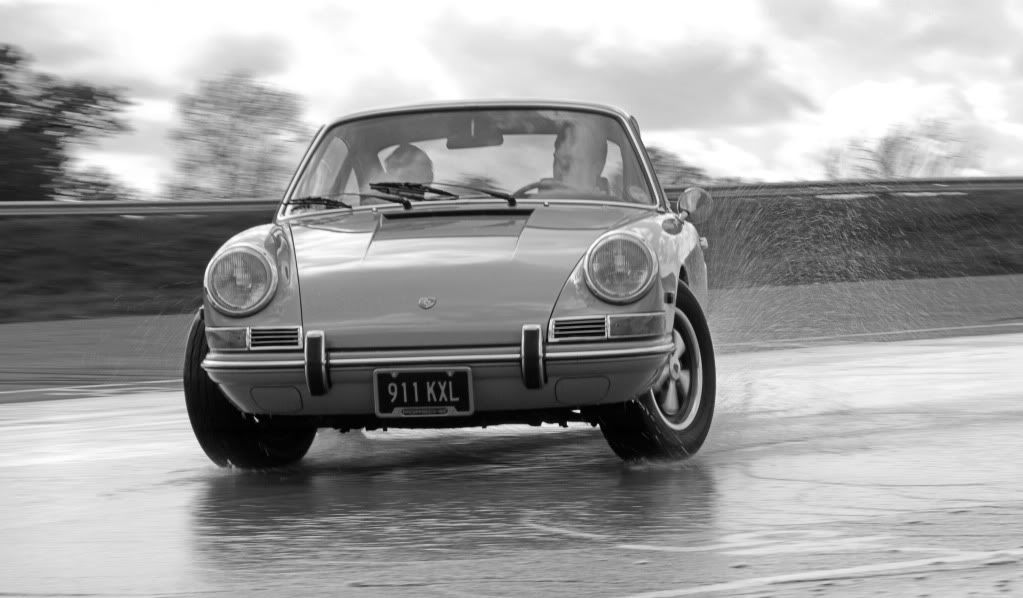
According to Motor magazine testing a standard 911 (registration GVB 911D) in December 1966, ‘one might almost criticise the handling on the grounds that it is too neutral – the car can be pushed up to its very high cornering speeds without a clear indication to the driver of what will happen when it finally lets go’. It goes on to say, ‘on dry roads this doesn’t matter very much – its most stable accelerating round a corner, when it maintains very mild understeer, but the limits are so high that few people will reach them on public roads’. To be honest, I don’t push my own car excessively hard in corners (it hasn’t been crashed in 42 years, so I’d rather not be the first to do it) yet the more I drive it, the more I’ve wondered what all the fuss was about. Slow in, fast out and don’t lift off mid-corner are the obvious rules. So what were they really like to drive on the limit? Somewhat optimistically perhaps, I hoped to ask people who had owned or competed in early 911s when they were new. I was very grateful therefore, to receive an enthusiastic response from Nick Faure, who knows a thing or to about throwing a SWB around. Like several racing drivers who made a mark in the sport, he spent his youth sneaking through the fence at Silverstone to see the F1 cars racing or testing. Without doubt he knew that this was what he wanted to do. In his first year of racing, he discovered a natural talent for it and won the national Mini championship in 1965. To race a Porsche however was what he was really aiming for and to race a 911 at that. Nick’s passion for Porsches had stemmed from his student days. A friends’ father owned a 356 and Nick would take every available opportunity to get a ride in it. The design, construction and attention to detail were in a different league compared with something like an MGB, according to Nick. A few years down the road, once they had been around a year or two, he’d buy a second-hand car for a £150-£200 pounds each in those days, drive it for a bit and then sell it on for £50-£100 profit and pay for his student fees. Since then he’s owned no less than seventy-five 356s! However the introduction of the 911 was something else. He had to somehow find a way to afford one but they were not cheap and he had no money. His dream would not be realised until 1969. ‘In those days you could of bought a D-Type for £1700 but I spent £4000 on a 911’ he says. Even a brand new E-Type would have been markedly cheaper at just over £2000. To do it required selling some priceless family possessions, the story of which would make a good book! He sold his grandmothers’ Rembrandt and Durer etchings plus a definitive collection of British stamps, and yet he was still a £1000 short!
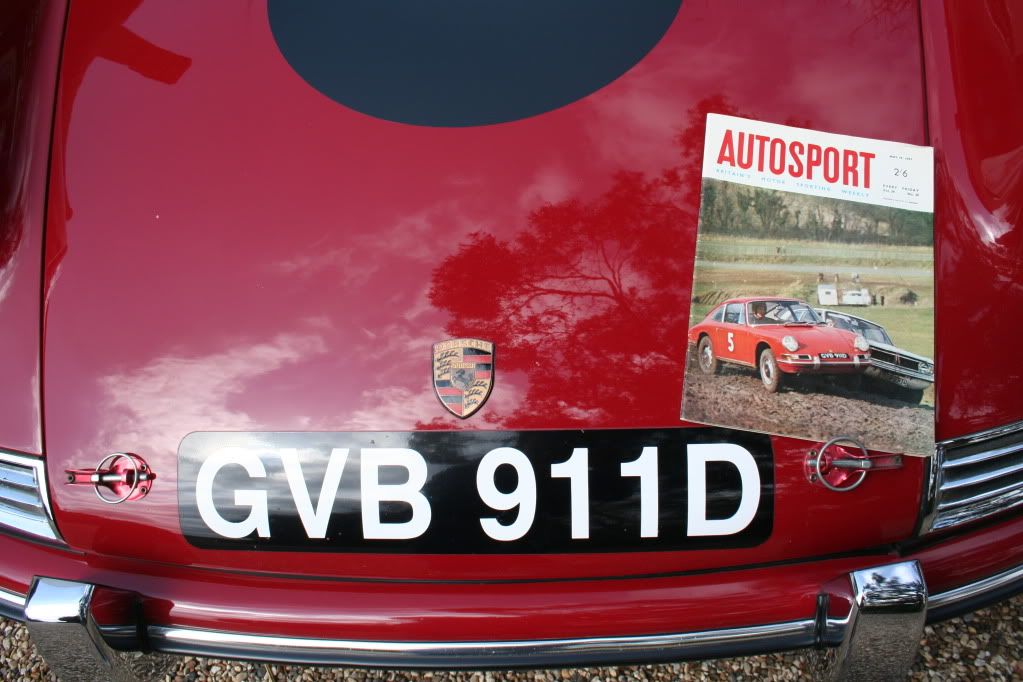
There were only a few race prepared cars available at the time and he had his heart set on GVB 911D. It had become known as the ‘Streamliner’ car, as entitled by the Motor road test, mentioned earlier. This car became gained further attention due to the exploits of Vic Elford, who borrowed the then road demonstrator to use in a rally cross event at Lydden Hill. He won the event, which was televised live, albeit at the expense of several panels, inflicted by the factory Ford rally drivers on the nice, shiny standard road car. As such, this provided Porsche with great publicity to the eventual delight of the Aldington family. At least, once they had calmed down having watched their valuable car being battered by a pair of Cortinas! Following the event, it was decided that the car be used for competition full-time, since it was no longer in ‘showroom’ condition. It was subsequently prepared for Vic to compete in the 1967 and 1968 British Saloon Car Championships. In 1969 Nick, with the help of friend Chris Maltin (by stumping up the remaining £1000 in return for a few race drives) finally got his hands on it. So, as you did in those good old days, Nick drove your car to the circuit, bolted on some race tyres and off he went. He competed with great success in the 1969 BTCC, culminating in several class wins and often matching or beating Vic Elford’s times from the previous years. This drew the attention of Porsche GB, who stepped in to support him. He wasn’t called Quick Nick for nothing!

‘The early 911s had a different steering ratio to the later models. You had to turn the wheel more to achieve the same level of input. Unlike modern cars you needed plenty of arm and in those days, with their big steering wheels, which in the heat of battle, was quite a clumsy thing. You didn’t want to make any mistakes, so just by being bold enough to try, I put into practice what I had learnt in a 356: when pulling out of a junction on a wet road, say to turn right, you show the car the direction you want to go, you put the steering on but you don’t take the steering off. What you do is power it out in first gear to break adhesion and you will quickly find that the natural ability of the car on the castor is to self-centre, not unlike a drinks trolley! So the front wheels will automatically come straight and better than you can do it too!’ Nick would show the car some lock into the corner, then take his hands off the wheel and just steer the car on the throttle until it was dead straight. Then grab the wheel again. The key is not to let off the throttle but continue to power out of the corner. It wouldn’t be suitable for normal situations or fast corners however, but for slower corners, very slippery roads or on the rough, it can be extremely useful. You needn’t worry about where the front wheels were pointing, as it will do it for you. ‘It’s very easy to spin a 911 by just chickening out, but I always say I start driving when everyone else stops because that’s when it starts becoming fun!’ Having a feel for the balance of the car is what he says is important. You can control the direction of the car as well with your right foot as you can with your right or left hand. Driving along unfamiliar roads, you can only rely on what you can see. So the slow in, fast out rule is golden. ‘When you see the corner unwinding, you can then blend in the throttle. If you get on the power a bit too much, and the tail comes out a bit, you’re not allowing the car to go out too far, because you’re driving in a style that is for a 911 – always allowing a bit more room on the exit.’
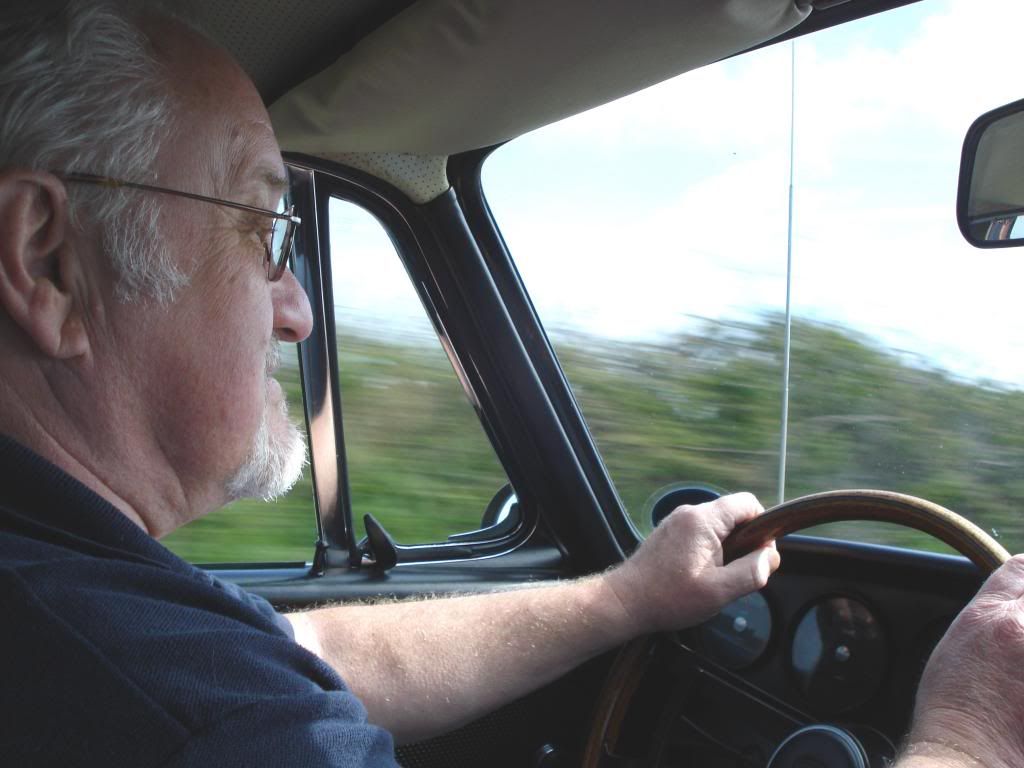
In comparison with the current today’s 911, the early cars had higher profile tyres and a relatively high ride height, offering a degree of compliance over uneven road surfaces. Nick compares the old cars as more sensitive to your every need, but won’t do the work for you (unlike modern cars which are becoming idiot proof). Nick was particularly enamoured with its steering; ‘what you get is lovely feedback through the wheel, it’s vibrant, its alive, and early cars much more sensitive to drivers’ input’ he says. The steering on a 911 was a whole new dimension to cars at the time. Certainly the back end is more alive than later models, yet an early 911 will settle very comfortably through a corner but for one essential piece of advice: don’t lift off. ‘Live with it. Start driving it at that point. Don’t give up, because that’s when you think things are going wrong, and of course you’ll get into trouble’. Half the charm of owning an early 911 is getting into in and driving it. If you really love driving, then the early cars are a lot more sensitive to the feel of the road and you’re input it, but they’re no more dangerous. They will only bite you if you believe what you read.

So then, what’s Nick’s favourite Porsche? Despite his prolific ownership of type 356, he’d be happy with any 911 circa 1965 – 1973, ‘though no particular model or year’. The images of his exploits in the BTCC leave you with no doubt about his driving abilities and what a 911 is capable of in the hands of someone who really understands them. You could spend hours listening to his stories and recollections. In fact, he’s what I’d call a legend.

So, what became of GVB 911D? It was one of the first 4 RHD 911s imported into the UK by AFN, hence its use as a demonstrator and press car. But after Vic’s eventful encounter with the Ford Cortinas at Lydden, the car was returned to the competitions department at Stuttgart where it was prepared for racing. At first, Porsche trialled a flat 8-cylinder engine from a 908, before it was decided on using a slightly more conventional, yet powerful Carrera 6 unit from a 906. Built with a magnesium alloy crankcase, titanium crankshaft and rods, drilled aluminium cam drive sprockets and two triple choke 46 IDA Webber carbs, output from the 2 litre engine was estimated at 225bhp. During this time, John Aldlington managed to persuade the RAC that due to the car’s 4 seats, it was eligible for racing in a saloon car (not sports car) class, therefore allowing entry into the 1967 British Saloon Car Championship! Elford drove the car in Class C (1300 – 2000cc) with great success, going on to win his class championship, highlighted by 2 wins and 4 second places.
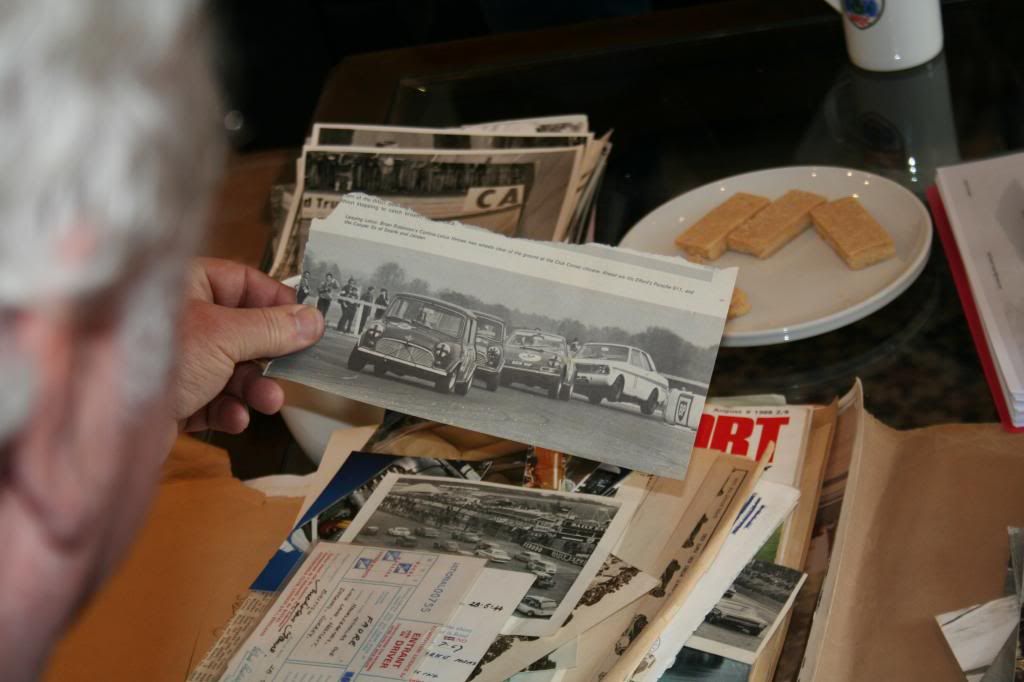
For the following season, the marketing department at AFN decided to make the car appear a little bit ‘younger’ by disguising it with a new registration: BEM 911F. With so many different commitments during 1968, and during what would become his most successful season, Vic achieved 2 class wins from only 4 meetings, the last of which at Silverstone on April 27th (where he won). For the remainder of the year, there’s no record of further outings and was eventually put up for sale, which is where Nick Faure’s adventure began.
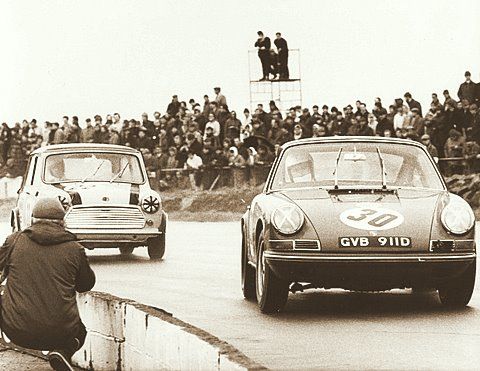
Today, the car is owned by PCGB member Rob Russell. His late father, Peter helped push Bjorn Waldegard’s 911 into Parc Ferme at the end of the 1969 RAC rally. At that moment, he decided that one day he had to own a 911. When, in 1982 was he was finally in a position to do so, he saw a car advertised by the then-owner Roger Connel. GVB 911D sat gleaming on his drive and the story goes that Peter had decided to buy it even before Roger Connel answered the doorbell. Connel had owned the car since 1972, restoring it in stages, when time and money allowed, but it was seldom used. Peter enjoyed his rallying and over the years entered the car on a handful of historic rally events, with success, resulting in class wins and continuing the car’s lengthy competition history.
Both the car and Nick Faure were once again reunited recently at Maxted-Page & Prill. Together with Rob, they inspected the car along with Nick’s wonderful collection of photographs as reference. It still retains many original features, aside from the modern seats and addition of a roll cage. The interior appeared to be original, and so to the correct colour Polo red.

Nick was quite surprised that it was still much ‘as it was’. The rear wheel arches were flared out by hand to accommodate larger tyres and most interestingly, the bonnet had a repair around the area where the fuel filler cap once appeared (later covered over by use of a large Shell sticker!). Nick recounted the noise from the special racing exhaust manifolds, ‘it sounded so exciting, I couldn’t wait to get in it.’ As ever, we all could have easily stayed for several more hours listening to his stories, brought alive by Nick’s black and white photos and his great affection for GVB 911D. ‘It made me this car’.

A list of Nick Faure’s racing achievements can be found in the archive section of the BRDC website. Many thanks to Nick Faure and Lee Maxted-Page and Rob Russell.
Richard Sellers (reluctant former owner of a 911SWB)

